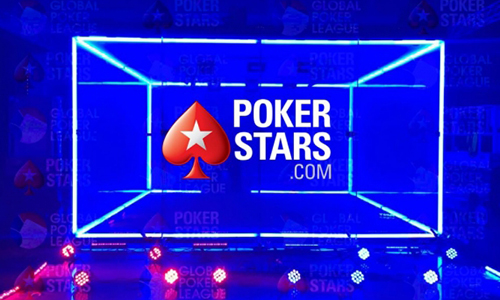PokerStars Introduces New Game, New Tournament Feature
PokerStars is the largest online poker room in the world. This is not breaking news. Because it is the dominant player in online poker, anything PokerStars does elicits reactions from the poker community. Love ‘em or hate ‘em, Stars isn’t afraid to try things. Recently, PokerStars introduced a couple new features to its poker offerings, so let’s take a look and see if we likey, shall we?
Early Payout Tournaments
There really is not all that much to this one. While the phrase “Early Payout Tournaments” could mean any number of two things, what it does mean is that when a multi-table tournament reaches the money, everyone remaining will immediately be paid the minimum cash. When a player is later eliminated – or wins the whole tournament – he or she will then be paid the rest of the prize money that was earned.
 So, if 100 players get paid and the min-cash is $50, the final 100 players will receive $50 as soon as the bubble boy is eliminated. If, say, 85th place pays $60, the player eliminated in 85th place will receive the additional $15 once he or she is knocked out.
So, if 100 players get paid and the min-cash is $50, the final 100 players will receive $50 as soon as the bubble boy is eliminated. If, say, 85th place pays $60, the player eliminated in 85th place will receive the additional $15 once he or she is knocked out.
All players will be reminded that they were paid the minimum cash via a pop-up at the table.
PokerStars is marketing Early Payout Tournaments as a favor to players, allowing players to get money back in their accounts quickly so that they can use those funds for more buy-ins. But who are we kidding – this is a way for PokerStars to get money circulating more quickly so that they can keep pulling down rake. I mean, really, how many people out there are using their last pennies on a tournament buy-in and are just dying to get into another game while they are still in the tournament? For most players, it won’t be all that long of a wait before they are eliminated and can get their money in normal circumstances.
Don’t get me wrong, it’s a good feature and makes perfect sense. Why not payout the min-cashes right away? But it’s really more for the poker room than it is for the players (though it is certainly good for both, which is fine!).
More than half of the multi-table tournaments at PokerStars are currently Early Payout Tournaments. The feature will eventually be rolled out worldwide.
Split Hold’em
PokerStars is no stranger to introducing new games. Split Hold’em looks like it could be a lot of fun. At the very least, it could be a lot of gamble. In Split Hold’em, everything is exactly like regular Hold’em except for one significant aspect: two sets of community cards are dealt simultaneously. It’s sort of like running it twice, but rather than one set of board cards after the other, it is both at the same time.
In order to win the entire pot, a player must win both hands using both sets of community cards. Keep in mind that each player is still only dealt two hole cards, so they are used with both boards. If one player wins the top board and another player wins the bottom board, the pot is split.
Strategies will certainly change with Split Hold’em. Sure, strong hole cards are still strong hole cards, but I could definitely see people opening up their ranges because of the possibility of winning at least one of the hands. Of course, playing for a split is probably a bad idea, but it will happen. It may be much more difficult to discern what cards others have, too, as with two sets of community cards out there, who knows why a player might be aggressive? Is he raising because he has top pair, top kicker on one board, or because he has a flush draw on the other?
In another way, though, Split Hold’em offers players more information. With three to five more community cards visible (depending on how long a player stays in the hand) probabilities can be narrowed down a bit more. More community cards also means that there will sometimes be fewer outs available for players to hit their hands.
I just watched a hand that illustrates some of the above. The two flops looked like this:
A♠-K♦-8♣
9♦-9♣-T♦
Think about if someone is playing J-Q off-suit. They have a gutshot draw on the top board and an open-ender on the bottom. That’s very nice, but on the bottom board, they have two fewer outs than they normally would because an 8 and a King are used up top. They also lose an out on the top board because of the Ten showing on the bottom. Of course, they know this and can adjust their probabilities accordingly. It’s pretty interesting stuff.



















COMMENTS